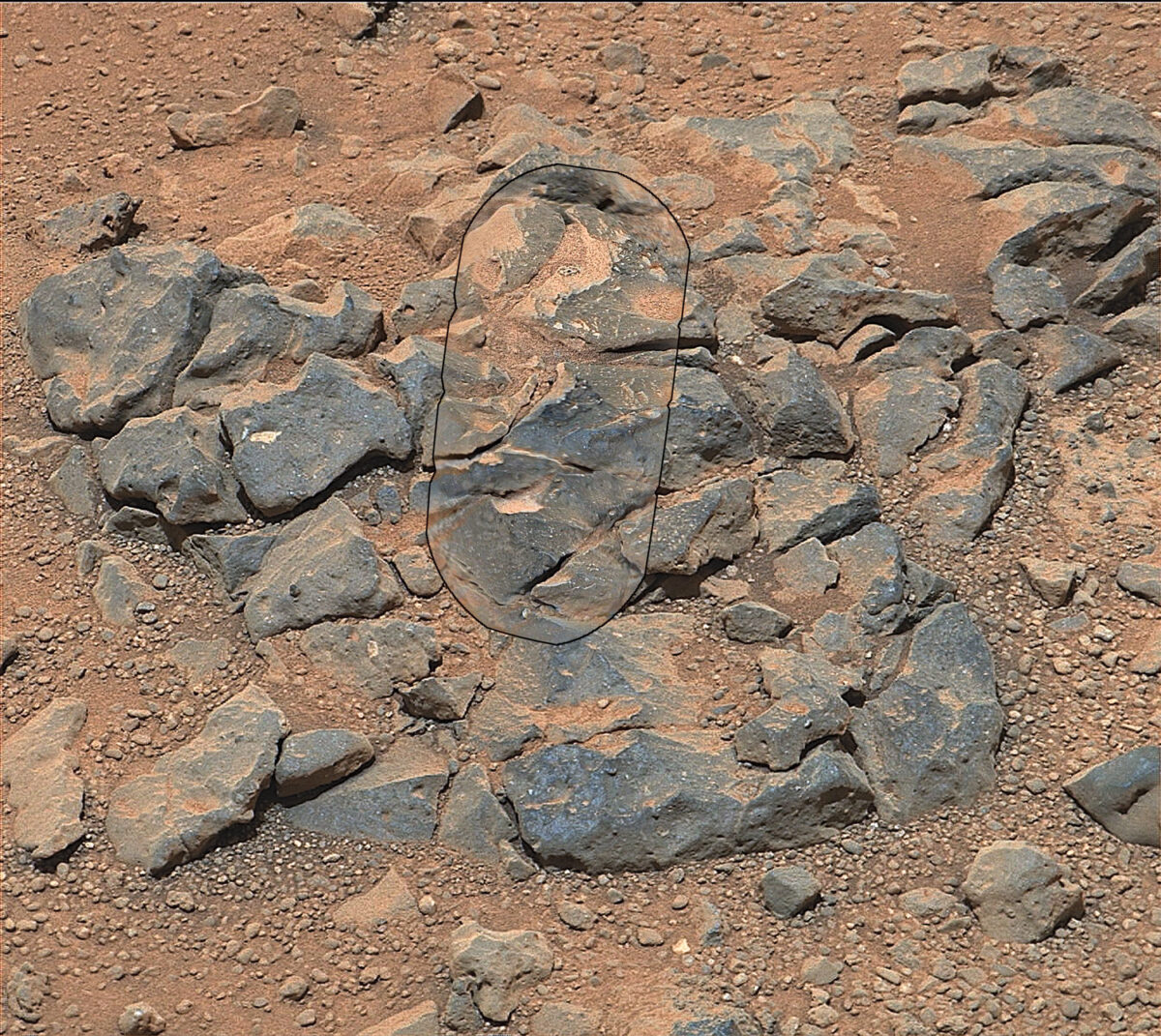As the Curiosity rover picks its way across the Martian surface, sampling rocks and snapping photos, it searches for signs that the dusty craters and ridges under its treads may once have supported life or, at least, that they might have been habitable. Now, using measurements of manganese abundances in Martian rocks, Lanza et al. provide new evidence that Mars may have hosted liquid water and a more strongly oxygenated atmosphere at some point in its past.
The team analyzed data collected by Curiosity’s ChemCam—a set of instruments that blasts rock samples with a narrow laser beam, measures their composition, and documents their geologic setting—and identified numerous locations along Curiosity’s traverse with unusually high concentrations of manganese. In some places, these concentrations exceeded the average of Martian basalts by two orders of magnitude.
Unlike iron and sulfur, which readily react under mildly oxidative conditions, manganese forms oxides only in the presence of strong oxidizing agents like free oxygen, perchlorate, or superoxide, always in the presence of water. Such conditions are required for manganese to become concentrated in amounts higher than its natural abundance in igneous rocks. On Earth, most large deposits of manganese formed after the rise of photosynthesis and the free oxygen it added to the atmosphere.
There is still a great deal the researchers do not know about Mars’s manganese-rich rocks. For instance, they cannot determine whether these manganese concentrations occur as grains in sedimentary rocks or as surface varnishes, what oxidants produced them, or when they formed. However, their results suggest that the surface of Mars has experienced more strongly oxidizing conditions than previously thought. (Geophysical Research Letters, doi:10.1002/2014GL060329, 2014)
—Julia Rosen, Writer
© 2014. American Geophysical Union. All rights reserved.
© 2014. American Geophysical Union. All rights reserved.

